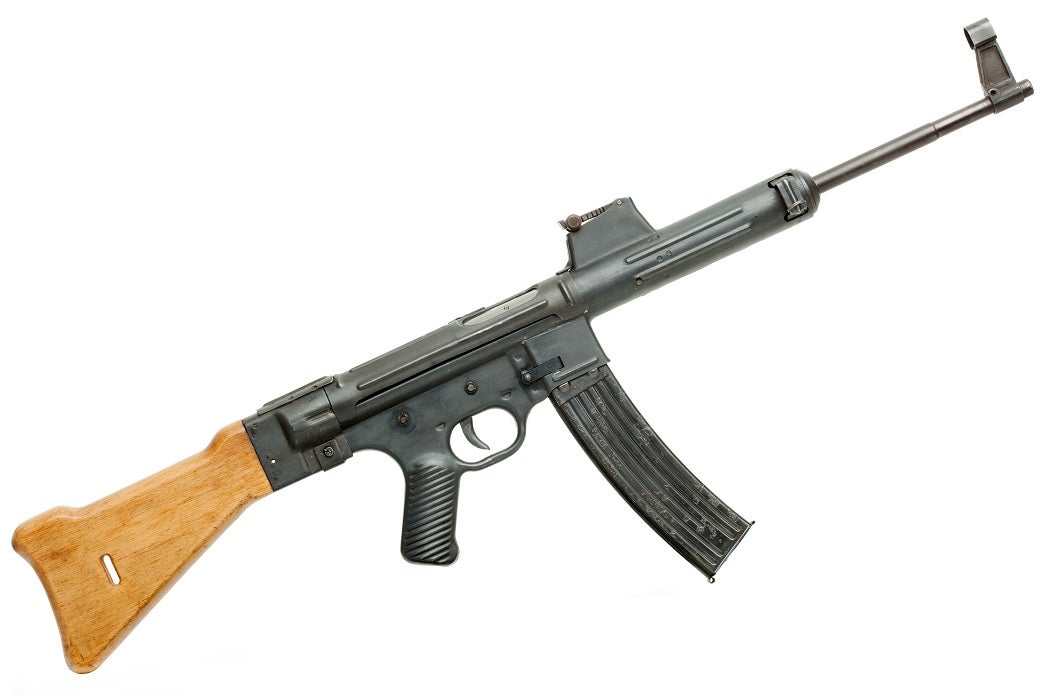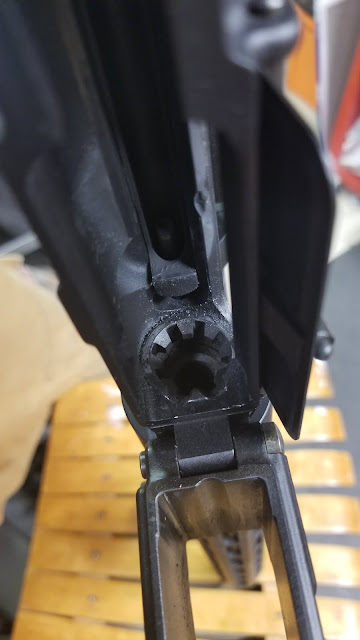The G3 Series of Rifles
 |
| Source |
Introduction:
The G3-type rifle is a family of hammer-fired, roller-locked rifles designed in the early 1950's. There are a ton of variants of the same operating mechanism, but for the purposes of simplicity, I'll refer to them all generally as G3-type rifles. Often referred to as the left arm of the free world, and with over 7 million built, the G3 joins the FAL in history as one of the great original battle rifles. The G3 has a stamped sheet-metal receiver and a roller-delayed blowback mechanism, which means it achieves its goal of being both economical and rugged. Nowadays, G3-type rifles continue to live on in military and paramilitary forces around the world. Producers of G3-type rifles include Iran, Turkey, Myanmar, Norway, Sweden, Pakistan, and more. Although originally chambered in 7.62 NATO, the basic operating mechanism has been adapted to almost every major military caliber.
Details:
The story of the G3 actually dates back to the final days of World War 2. Mauser engineers in Germany were actively working on a successor to the Stg-44 assault rifle. In doing so, they came up with the roller-lock mechanism. Development of the rifle was halted due to the end of the war, but many Mauser engineers were brought into Spain to continue their work. The further refinement lead to, essentially, the G3 that we know today, the CETME Model A.
 |
| The Gerat-06, note the similarities in the buttstock compared to the G3 |
 |
| A CETME Rifle |
But the development of the roller-locked design didn't stop there. Once the rifle was adopted in Germany, H&K took the design and ran with it. They took the design and made a a submachine gun, a light machine gun, and assault rifles in 5.56 and 7.62x39.

The HK33 was an G3-varaint chambered in 5.56 NATO. The HK33 saw moderate success with many military and police forces worldwide. They were made in both long barrel and short barrel varaints, with some being used by forces such as the US Border Patrol and UK SAS and Military Police. Although not as prolific as it's older brother, the HK33 achieved some solid success in countires that required a simpler, more rugged rifle than something like an M16.

The LMG variant of the G3 was the HK21. The HK21 utilized a new belt-fed system and quick change barrel, while also maintaining the original roller-delayed design. The design was limited by a quirk with the roller-delayed system, the bolt tended to bounce when it closed. This bolt bounce was a common problem amongst G3 type rifles that only would really show up during full-auto fire. The HK21 saw a fair amount of success worldwide, being adopted by many South American countries and being used by Navy Seals in Vietnam.

Lastly, there's the submachinegun that isn't typically thought of as descending from the G3, the MP5. The MP5 is a roller-delayed SMG chambered in 9mm Parabellum. It utilizes the same mechanism as its large-caliber cousins, just reduced in size. This actually provides some solid advantages in a world of straight blowback 9mm SMGs. Because it is roller-delayed, the bolt velocity is reduced when it hits the rear of travel, resulting in significantly less recoil. There is also weight savings. Because the system doesn't rely on the weight of the bolt to hold it closed, the bolt can be made significantly lighter, leading to a very handy SMG.
Conclusion:
The G3 series of rifles is a series thats is synonymous with its operating mechanism. Just as rotating bolt systems are exemplified in Kalashnikov and Stoner designs, the roller-delayed system is all but perfected in the H&K. Sure there are others such as the Sig Stg. 57, but none are as prolific and battle-tested as the G3 series.
The G3 and its variants continue to see heavy use on both sides of just about every conflict on Earth. Their rugged, low-maintenance design makes it ideal for forces comprised of conscripts or largely untrained soldiers. Although its design is over half a century old, the G3 continues to be produced for the commercial market as well, with companies such as PTR and Century Arms keeping the rifle alive and well on the civilian market.

Comments
Post a Comment